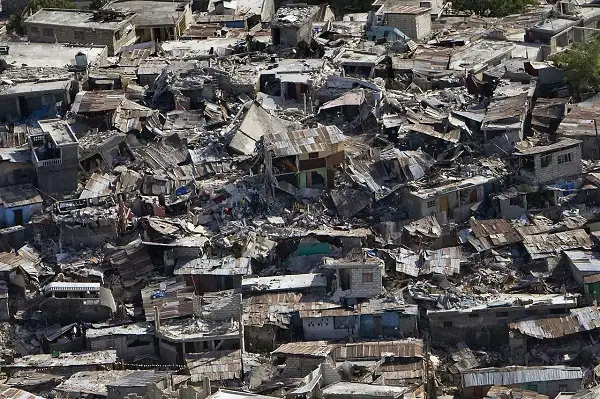Earthquakes are one of the most powerful and devastating natural disasters that can strike anywhere in the world. They can cause widespread destruction, loss of life, and long-term consequences for affected communities. Some countries are more prone to earthquakes than others due to their location on tectonic plate boundaries and their history of seismic activity. In this article, we will explore the 5 most earthquake-prone countries in the world. From Japan, which experiences frequent earthquakes and is home to some of the most powerful earthquakes in history, to Nepal, which has experienced some of the deadliest earthquakes in history, these countries serve as a reminder of the power and unpredictability of the natural world. We will examine the geological factors that make these countries more prone to earthquakes, the impact of earthquakes on their populations, and the measures they have taken to prepare for and mitigate the effects of these powerful natural disasters. By gaining a better understanding of these countries and their seismic activity, we can learn important lessons about earthquake preparedness and resilience that can be applied to communities around the world.

Japan
Japan is located on the Pacific Ring of Fire, which is known for its intense seismic activity. As a result, Japan experiences frequent earthquakes, with hundreds of small quakes occurring each day, and it has a history of devastating earthquakes that have caused widespread destruction and loss of life.
One of the most powerful earthquakes in Japan’s history was the Great East Japan Earthquake in 2011, which had a magnitude of 9.0 and triggered a massive tsunami that caused widespread damage and killed more than 15,000 people. The earthquake also caused a nuclear disaster at the Fukushima Daiichi Nuclear Power Plant, which released radioactive material into the environment and forced the evacuation of thousands of residents in the area.
Despite the frequency and intensity of earthquakes in Japan, the country has developed some of the most advanced earthquake preparedness and response systems in the world. Building codes in Japan are among the strictest in the world, requiring buildings to be designed to withstand earthquakes and other natural disasters. The country has also developed an early warning system that can alert people to an impending earthquake and give them time to take cover or evacuate.
In addition to these measures, Japan has also invested heavily in earthquake research and technology, including the development of seismic-resistant materials and the use of earthquake simulation technology to better understand the impact of earthquakes on buildings and infrastructure.
While earthquakes remain a significant threat in Japan, the country’s preparedness and resilience have allowed it to recover quickly from past earthquakes and minimize the impact on its population. By continuing to invest in earthquake preparedness and response systems, Japan serves as a model for other countries that face the threat of seismic activity.
Indonesia
Indonesia is situated on the Pacific Ring of Fire, which is known for its intense seismic activity. The country is located on the boundary between several tectonic plates, making it vulnerable to frequent earthquakes and volcanic eruptions. As a result, Indonesia has a long history of destructive earthquakes, including the 2004 Indian Ocean earthquake and tsunami, which killed more than 230,000 people in the region.
One of the most active seismic regions in Indonesia is the Sunda Megathrust, a fault line that stretches along the coast of Sumatra and Java. This fault line is capable of producing powerful earthquakes that can trigger devastating tsunamis. In 2018, a 7.5 magnitude earthquake struck the city of Palu on the island of Sulawesi, triggering a tsunami that killed more than 4,000 people and caused widespread destruction.
Despite the challenges of living in an earthquake-prone region, Indonesia has made significant strides in developing earthquake preparedness and response systems. The country has established an early warning system for earthquakes and tsunamis, which provides critical information to residents in affected areas. Indonesia has also invested in building earthquake-resistant infrastructure and homes, especially in high-risk areas.
In addition to these measures, the Indonesian government has worked to educate its population about earthquake preparedness, including conducting regular earthquake drills and training emergency response teams. The country has also worked with international organizations and other countries to share information and resources to better prepare for and respond to earthquakes.
While Indonesia remains vulnerable to earthquakes and other natural disasters, the country’s efforts to improve its earthquake preparedness and response systems have helped to minimize the impact of these events on its population. By continuing to invest in earthquake preparedness and response systems, Indonesia can better protect its people from the destructive power of earthquakes and tsunamis.
Iran
Iran is situated on several major fault lines that make it vulnerable to frequent earthquakes. The country has experienced some of the most devastating earthquakes in history, including the 2003 Bam earthquake, which killed more than 26,000 people and destroyed much of the city of Bam.
One of the main reasons Iran is so prone to earthquakes is its location on the Alpine-Himalayan seismic belt, which stretches from Europe to Asia and is home to some of the most active seismic zones in the world. Iran also sits on the boundary between the Arabian Plate and the Eurasian Plate, which are constantly pushing against each other, causing frequent seismic activity.
Despite the challenges of living in an earthquake-prone region, Iran has taken steps to improve its earthquake preparedness and response systems. The country has developed an early warning system for earthquakes, which provides critical information to residents in affected areas. Iran has also invested in building earthquake-resistant infrastructure and homes, especially in high-risk areas.
In addition to these measures, the Iranian government has worked to educate its population about earthquake preparedness, including conducting regular earthquake drills and training emergency response teams. The country has also worked with international organizations and other countries to share information and resources to better prepare for and respond to earthquakes.
However, the effectiveness of Iran’s earthquake preparedness and response systems has been limited by economic sanctions and political instability, which have made it difficult for the country to access the resources and expertise it needs to adequately prepare for earthquakes. Despite these challenges, Iran’s efforts to improve its earthquake preparedness and response systems have helped to minimize the impact of earthquakes on its population and infrastructure. By continuing to invest in earthquake preparedness and response systems, Iran can better protect its people from the destructive power of earthquakes.
Turkey
Turkey is situated on several major fault lines that make it vulnerable to frequent earthquakes. The country has experienced some of the most devastating earthquakes in history, including the 1999 Marmara earthquake, which killed more than 17,000 people and caused widespread destruction in the region.
One of the main reasons Turkey is so prone to earthquakes is its location on the North Anatolian Fault, which runs across the country from east to west. This fault line is capable of producing powerful earthquakes that can cause significant damage to infrastructure and human lives.
Despite the challenges of living in an earthquake-prone region, Turkey has taken steps to improve its earthquake preparedness and response systems. The country has developed an early warning system for earthquakes, which provides critical information to residents in affected areas. Turkey has also invested in building earthquake-resistant infrastructure and homes, especially in high-risk areas.
In addition to these measures, the Turkish government has worked to educate its population about earthquake preparedness, including conducting regular earthquake drills and training emergency response teams. The country has also worked with international organizations and other countries to share information and resources to better prepare for and respond to earthquakes.
However, Turkey still faces challenges in improving its earthquake preparedness and response systems, especially in rural areas where access to resources and expertise is limited. In addition, political instability and economic challenges have made it difficult for the country to allocate sufficient resources to earthquake preparedness and response efforts.
Despite these challenges, Turkey’s efforts to improve its earthquake preparedness and response systems have helped to minimize the impact of earthquakes on its population and infrastructure. By continuing to invest in earthquake preparedness and response systems, Turkey can better protect its people from the destructive power of earthquakes.
China
China is one of the 10 most earthquake-prone countries in the world, with a long history of destructive earthquakes. The country’s geography, which includes several active fault lines and mountain ranges, makes it particularly vulnerable to seismic activity.
One of the most devastating earthquakes in China’s recent history was the 2008 Sichuan earthquake, which killed more than 87,000 people and caused widespread destruction in the region. This earthquake was caused by the movement of the Longmenshan fault, which runs through the region.
Despite the challenges of living in an earthquake-prone region, China has taken significant steps to improve its earthquake preparedness and response systems. The country has developed an early warning system for earthquakes, which provides critical information to residents in affected areas. China has also invested in building earthquake-resistant infrastructure and homes, especially in high-risk areas.
In addition to these measures, the Chinese government has worked to educate its population about earthquake preparedness, including conducting regular earthquake drills and training emergency response teams. The country has also worked with international organizations and other countries to share information and resources to better prepare for and respond to earthquakes.
However, China still faces significant challenges in improving its earthquake preparedness and response systems, especially in rural areas where access to resources and expertise is limited. The country’s large population and dense urban areas also pose unique challenges for earthquake preparedness and response efforts.
Despite these challenges, China’s efforts to improve its earthquake preparedness and response systems have helped to minimize the impact of earthquakes on its population and infrastructure. By continuing to invest in earthquake preparedness and response systems, China can better protect its people from the destructive power of earthquakes.








Chile should be on that list.